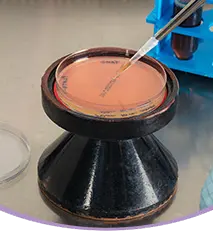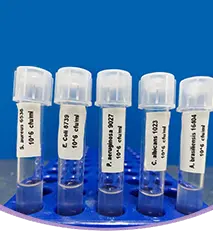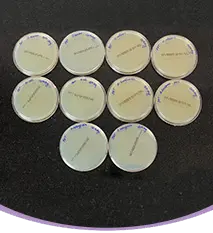
Anti-microbial Preservative Efficacy

What Are Challenge Test Micro-organsims & Why We Use Them?
How We Test The Preservation Efficacy Of Our Products?

Introducing The Test Product

The first step involves separating the test product into five containers, each containing one challenge micro-organism. This includes Candida albicans,Aspergillus brasiliensis, Escherichia coli, Pseudomonas aeruginosa, and Staphylococcus aureus.

Calculating The Initial Pathogenic Population Count

Next, the initial population count for all five micro-organisms in the test product is calculated by diluting the solution from the respective containers andculturing it on an agar plate (solidified gel base containing essential growth nutrients). The pathogens are then allowed to grow under appropriate lab conditions.

Tracking The Growth Of Challenge Micro-organisms

Similar to the last step, the population count for each challenge micro-organism is calculated by the cell plating method at different intervals of time, i.e.,7 days, 14 days, and 28 days respectively. After each time duration, the concentration of the pathogen should reflect a steady decline as the preservatives work against them.
What's The Final Result?
Pick from our range of tested Anti-microbial Preservative Efficacy Products Now
Blog
Product Related Topics























